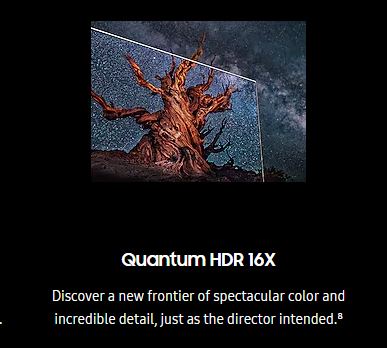The world of television technology is full of terms that often blend genuine advances with marketing jargon. One example is “Quantum HDR,” a term that sounds like a groundbreaking technology but is actually a marketing strategy by Samsung to highlight the color quality of its displays.
The Origin and Meaning of Quantum HDR
In 2016, the next generation of LED displays emerged, incorporating materials that enhanced light transmission and pixel color accuracy. Samsung introduced the term “quantum dots” to describe these displays, which quickly became synonymous with the new Quantum LED (or QLED) screens. Although the “quantum” part of the term stuck, the “dots” aspect was soon forgotten. Around the same time, High Dynamic Range (HDR) technology was developed, allowing for finer control of brightness and contrast in images through metadata embedded in video content.
In 2019, Samsung combined these two ideas under the new marketing slogan “Quantum HDR,” specifically applied to its QLED displays. While this branding seemed compelling, the exact meaning of Quantum HDR was unclear. Samsung explained it as an internal brightness measure established during TV testing, yet customers were left puzzled by the numerical values like 16x or 64x. Ultimately, these numbers represented peak brightness levels achievable by the TVs:
- Quantum HDR 12x: Peak brightness of 1200 nits (12 × 100)
- Quantum HDR 16x: Peak brightness of 1600 nits (16 × 100)
- Quantum HDR 24x: Peak brightness of 2400 nits (24 × 100)
- Quantum HDR 32x: Peak brightness of 3200 nits (32 × 100)
- Quantum HDR 40x: Peak brightness of 4000 nits (40 × 100)
- Quantum HDR 64x: Peak brightness of 6400 nits (64 × 100)

However, these brightness values didn’t necessarily correlate with image quality. Typically, higher values were found in premium models. By 2022, the relevance of these numerical designations had faded, and Samsung moved on to a new classification.
Neo Quantum HDR: A Clearer Classification
In 2022, Samsung revised its terminology. “Quantum HDR” now remains for QLED TVs, while Neo QLED models are labeled with “Neo Quantum HDR.” The x-values (such as 16x or 64x) have been dropped, making it easier to understand display specifications:
- Quantum HDR: QLED with an 8-bit + FRC display
- Quantum HDR+: QLED with a 10-bit display
- Neo Quantum HDR: Neo QLED with an 8-bit + FRC display
- Neo Quantum HDR+: Neo QLED with a 10-bit display
These updated parameter names help buyers more easily assess the class and quality of a Samsung TV display, information that’s otherwise hard to gauge as Samsung often omits details like bit color depth from the specifications.







LOVE YHE NEW SYSTEM , BUT THE ONE I HAVE IN MY ROOM IS THE 65″ QLED
I WILL LIKE THE 75″ QLED 80S 2020…
[…] the 85-inch giant. Samsung states that units in the QT67 series offer “100% color volume” and quantum HDR (the screen is made up of quantum […]